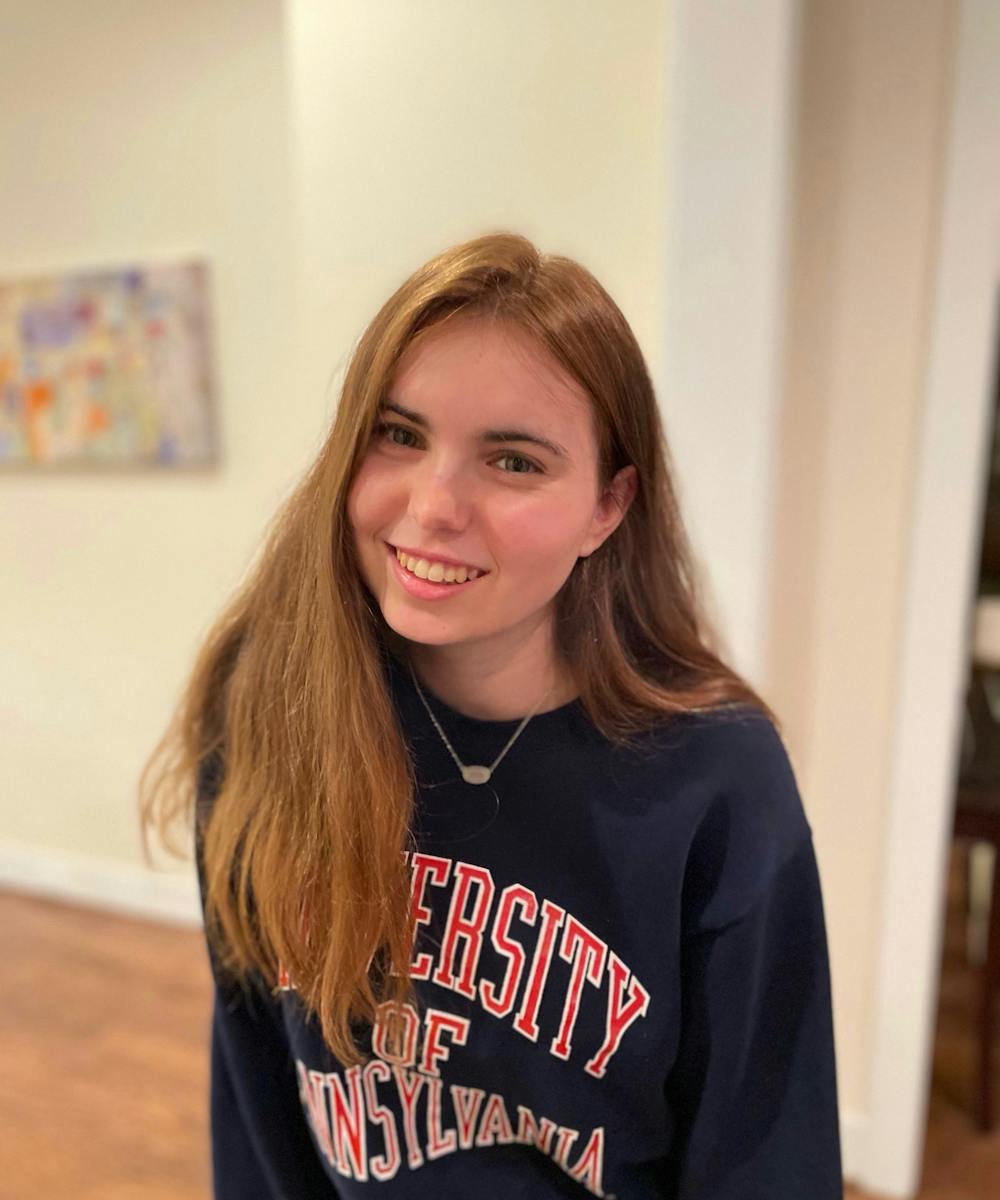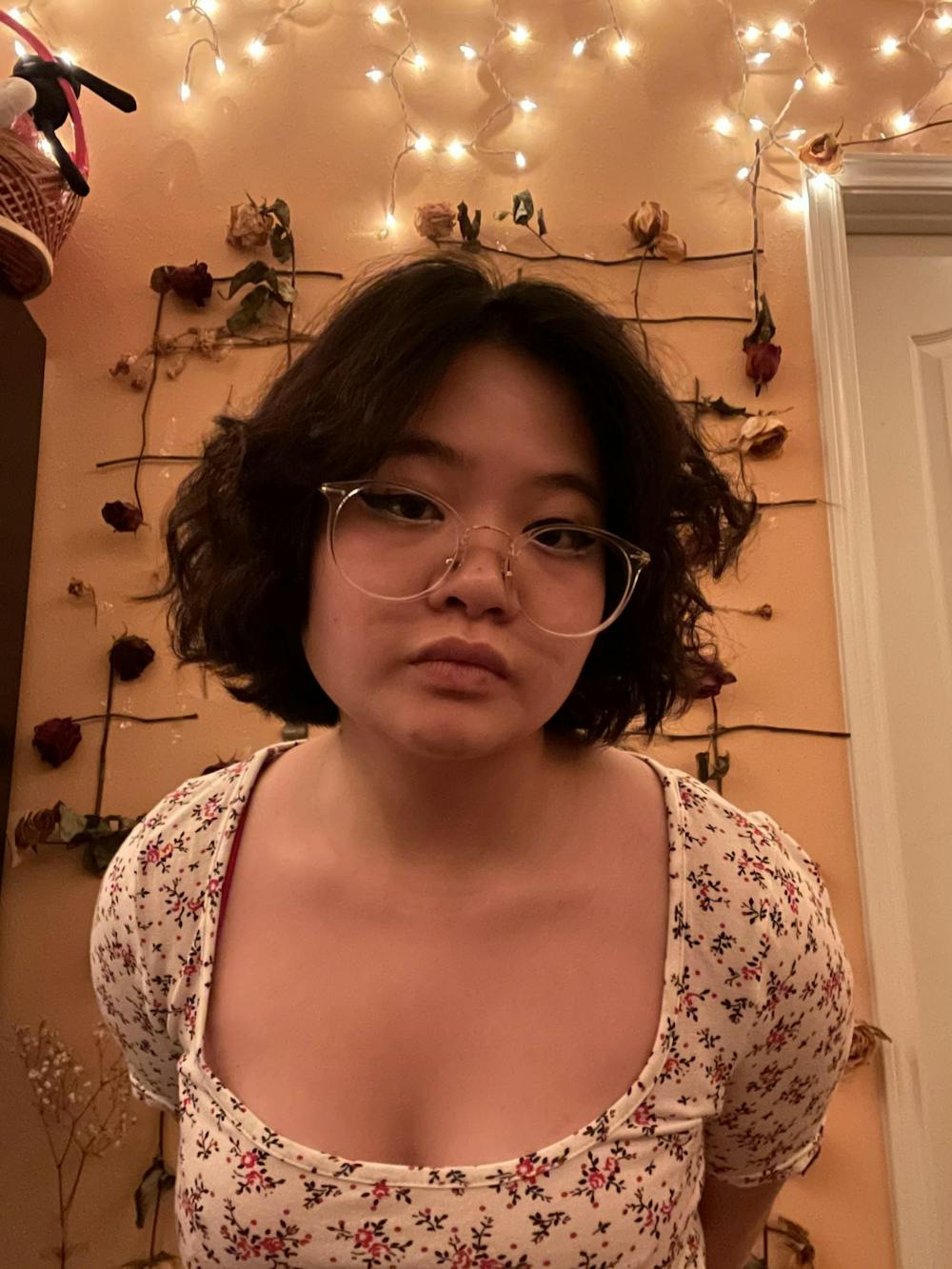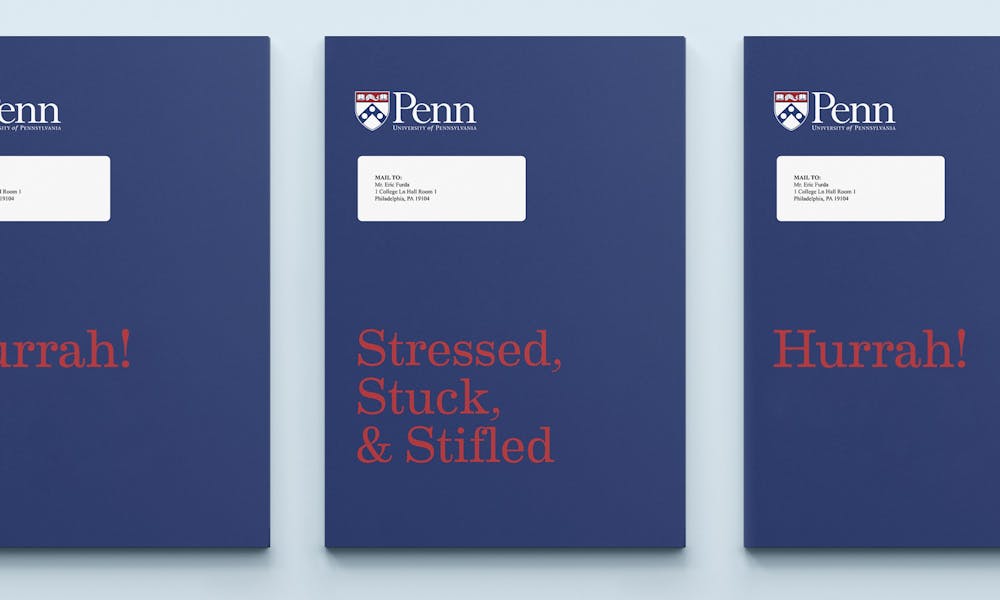It was Saturday, July 18, 2020, and Lavanya Neti (W '25) was on hold with the ACT company for the third time that day. She sat in the back of her parents’ car with her last meal—vegan brunch from a stop in Davis, Calif.—twisting in her stomach and a thousand questions running through her mind. She hadn’t heard from the ACT since scheduling her test a few days before, but her family had decided to start the road trip to the testing center anyway. They could use the change of scenery.
Her phone’s connection faltered, and the call dropped. Lavanya sighed and turned her tired eyes to the window, surveying the barren California landscape to avoid looking at the half–open test prep book in the seat next to her. This was the third exam she’d tried to schedule in the past few months. After her first test was canceled due to COVID–19, she booked another one at the closest location: three hours away in Arroyo Grande, Calif. It wasn’t ideal, but she would enjoy the drive with her family, and the pandemic had canceled all other plans. Then, the day before the deadline to reschedule her exam, the test was canceled again. Now, the only testing location with an open slot was a small Christian academy in Oregon—nearly 400 miles away from home. She booked it.
In a few minutes, she called again and pressed random buttons in frustration, almost certain that she would be hung up on. That night, she fell into a fitful sleep in a hotel in Southwest Oregon. Then, the next morning, she rose with the sun and took the exam in a classroom at Rogue Valley Adventist Academy in Medford, Ore.—six hours from her home in Fremont, Calif.
“I just remember how desperate I was,” Lavanya says. “I think some people went to really great lengths [to take standardized tests].”
Six months later, she can laugh about her experience. She can chat about the delicious vegan food on the road trip, the relaxed environment of her four–person testing room, and the calm of the half–day drive with her parents. However, behind Lavanya’s excited speech is a stark example of the pandemic’s impact on Penn’s incoming class.

From rural Texas, to the Philly suburbs, to the Philippines, the Class of 2025 shares the harrowing experience of applying to college in a pandemic. Along with the usual roadblocks—navigating language barriers, writing applications, and balancing extracurriculars with a social life senior year—they also faced canceled standardized tests, cutbacks on school participation, and engagement with entirely virtual programming. Universities responded to the college application season during the pandemic by providing a wide range of online resources and new policies to ease the burden, including the implementation of a test–optional policy.
Yet these offerings only addressed a fraction of students’ needs. Students had to work within a new and confusing environment to meet universities' expectations—whether that be through driving an extra 800 miles to take a standardized test, or mobilizing students to educate their peers about the college application process.
Lavanya’s strenuous testing experience is not an anomaly. Nearly 3,000 miles away in McLean, Va., Sophia Powell (C '25) scrambled to book her SAT exam. After months of preparation for her first SAT, Sophia found out the exam was canceled the day before it was set to be administered. She booked the exam five more times after that. Three of them were canceled.
As Sophia recounts her story, her speech is calm, occasionally punctuated with nervous laughter. Even so, it’s evident how taxing the time–compressed environment was. After her third time booking the test, she felt nothing but exasperation. “I spent that entire week hoping and praying, like, ‘I just want this over with,’” she says.

On a foggy Wednesday morning in September, Sophia pulled up to McLean High School in a bit of a trance. She was met with a masked, socially distanced line of students that trailed outside the doors of her high school. It was the first time she had seen most of her classmates since March.
After a quick temperature check, she was able to take the exam for the first time, nine months after she had originally tried to schedule it. That Saturday, a mere three days later, Sophia repeated the process. She’d booked two tests in the same week in case one of them was canceled. Including the practice test she took in the days leading up to her exams, she'd completed three SATs that week.
Hailing from cutthroat high schools in the Bay Area and Northern Virginia, Lavanya and Sophia are examples of students who had the resources to go beyond Penn’s new test–optional policy. This policy meant that students weren't required to submit SAT, ACT, or AP/IB test scores. (However, international students still had to submit TOEFL/IELTS scores.) Like Lavanya and Sophia, many students still scrambled to book standardized tests out of fear that not having them would harm their applications.

But Interim Dean of Admissions John McLaughlin says that the test–optional policy, as well as other virtual programming, was designed to help, not hinder their applications.
“Regardless of whether testing is or isn’t available, we look to other parts of the application to provide insight into a student’s preparation,” he says. “Basically, if testing isn’t there, then we focus on what is there—transcript, recommendations, activities, interview, [and] essays.”
Jody Sweeney, director of college counseling at William Penn Charter School, a private school in Philadelphia and a feeder school for Penn, praised universities’ efforts to conduct virtual programming for prospective students and expand offerings to include services that are typically outside the scope of their engagement.
“We noticed admissions offices also started to provide information about the college search specifically,” says Sweeney. “They might have had a virtual workshop on the college essay, or how to conduct an interview—some [general] college search oriented information.”
Sweeney noted one of Penn’s successes: specific programming geared towards marginalized communities, which became much more feasible during the COVID–19 pandemic. The new virtual nature of college readiness resources meant that universities could better address the needs of underrepresented groups at their schools.
“If there was a program that was highlighting a STEM initiative, or a program highlighting diversity on campus, or a program that was geared toward Black students, or programming for students of color—I think those niche types of programs were very beneficial,” she says.
Although she works at a predominantly upper–class, white institution, she recognizes that online programming has allowed less privileged schools to access the same opportunities as Penn Charter, namely in the form of college visits. Her school’s connections and proximity to campus granted students in–person visits from Penn admissions officers several times a year. Now, the same administrators can work with several high schools across the country on the same day over Zoom. The numbers reflect this equalizing trend: There was a 34% spike in applicants to Penn's Class of 2025, which was spurred by an increase in the applications of international students and students who have been historically underrepresented at Penn, according to McLaughlin.
“[Virtual programming] democratizes access to information in a way because students can have a meaningful interaction with Penn Admissions without the time and financial costs associated with a campus visit,” says McLaughlin.
But despite the University’s efforts to provide adequate resources and support students during this time, many students still felt overwhelmed by the competition at their high schools. A survey conducted by Street revealed that the top three words used by members of the Class of 2025 to describe the college application process were “stressful” (by an overwhelming margin), “difficult,” and “interesting."
“There’s definitely a lot of insanity out here in terms of that competitive environment,” Sophia says. “I've been hearing how it's really a bloodbath this year.”
While students struggled to cope with the pandemic stateside, international students, who often utilize virtual programming in a normal application season, had a different experience applying to college during COVID–19. Kate Ong (C '25), from Manila, Philippines, recounts her experience of limited extracurricular involvement, canceled trips, and restricted community work, all of which were hard to explain to college admissions offices.

Kate’s school, Immaculate Conception Academy, implemented a single–extracurricular policy during the pandemic. Students could only be in one club to limit in–person interactions, and the administration monitored every student’s activities to ensure the policy was followed. Kate chose to maintain her student council vice presidency (and snuck in her involvement with the newspaper).
“I think I communicated [the reason for my lack of extracurriculars senior year] as best as I could in the additional information section. But I feel like my school could have done a better job of conveying that to the colleges through my guidance counselor, because she didn't mention anything about it,” Kate says.
Even beyond school, the scope of her impact was limited by the pandemic.
In 2019, Kate had co–founded an organization, Likhang Puso, which helps Indigenous groups in the Philippines. Puso primarily works with groups that live on the island Mindoro, which is about an hour–long flight from Manila. The community doesn’t have electricity or developed communication infrastructure, so it became increasingly complicated to organize visits and aid during the pandemic. Kate and her team settled for communicating once a week—whenever their contact went into the city and gained a connection to speak with them—but the work became much more difficult to manage.
Although the experiences of Lavanya, Sophia, and Kate represent many of the trials of the incoming Class of 2025, some schools were more equipped than others to deal with the challenges of the pandemic. Kathleen Hoang (C ’25), a QuestBridge scholar from Texas, turned her disadvantageous situation into an opportunity to help future students applying to college from her community.

Kathleen’s anger emanates through the computer screen when she speaks about her application process, her voice quivering with frustration, as though there aren’t words strong enough to express her exasperation. Her college application saga is a tale of underfunded administrators and classmates just as lost as she was.
Kathleen attends Cypress Lakes High School in Cypress, Texas, a suburb of Houston. The school has over 3,500 students, only 10% of whom are white. A significant majority of the school is Black and Hispanic, and 64% of its students are on free or reduced lunch plans. The school’s resources are stretched thin—the only college readiness resources they offer come from an underused college and career center. Most students don’t apply to schools out of state, and Kathleen recalls that, before her year, there were only three students in recent history who attended Ivy League institutions.
“[Students who attend Ivies] are such ridiculous success stories that they call us, ‘the rose that grew in the concrete,’” says Kathleen. “But no one wants to be the rose that grew in the concrete. We want to be the rose that blooms in a garden. We don't want that story.”
Texas’s lackluster response to COVID–19 only worsened Kathleen’s situation. She lived in a single–parent household, and her mother lost her job close to the beginning of the pandemic. The situation raised the stakes of her college career. Securing a full ride scholarship through QuestBridge would place her on an even playing field with the students who were not as impacted by the pandemic.
But Kathleen’s teachers went as far as to actively discourage students from applying to high–ranking universities. Last year, her United States history teacher reserved a week of the course to talk about college readiness. Kathleen recounts that when he brought up Harvard and Yale, he said, “Let’s be honest. Nobody from this school is going to get in there.”
While Kathleen and her friends ignored their teachers’ advice and applied to high–ranking schools anyway, she was frustrated by the lack of support for students at her school who would never know better. For students in single–parent and immigrant homes like Kathleen, school administrators are often the only authority on college applications and student futures.
During her own college application process, Kathleen leaned heavily on internet resources, from Penn admissions events, to TikToks, to CollegePoint, a free resource with college readiness information. However, Kathleen saw that the existence of this information on the internet wasn't enough to encourage students at her school to apply to high–ranking institutions because they had not been set up to seek out preparatory material.
To fill in the gaps between her school and university resources, Kathleen started the Cypress Lakes Mentorship Program, which pairs 50 high school seniors with around 650 high school first years to mentor them through the college application process.
People in Kathleen’s program have already become more informed and involved in planning their academic futures. Kathleen says that students have begun to engage in education activism, like attending school board meetings after learning about how systemic classism impacts them. The success is gratifying, but it begs the question of why a student mentorship program must exist in the first place.
While Lavanya and Sophia’s standardized testing difficulties can be attributed specifically to the pandemic, Kate and Kathleen’s experiences point to a pertinent intersection: the effects of the pandemic combined with existing inequity in college readiness. While all schools this year had the opportunity to attend virtual sessions, well–informed private schools like Penn Charter have a history of knowledge built from in–person visits prior to the pandemic. Meanwhile, underperforming schools like Cypress Lakes stay uninformed because of the lack of communication between university administrators and staff at low–income schools—a divide exacerbated by the pandemic. All the while, the pandemic exaggerates the disconnect between international schools and universities in the United States.
Sweeney summarizes this application season for what it was: students making the most out of an incredibly complex, difficult situation. Even though the pandemic brought major challenges, the students survived. Next semester, they'll start their journeys at Penn.
"[The Class of 2025] were all troopers, and they made it," she says.

